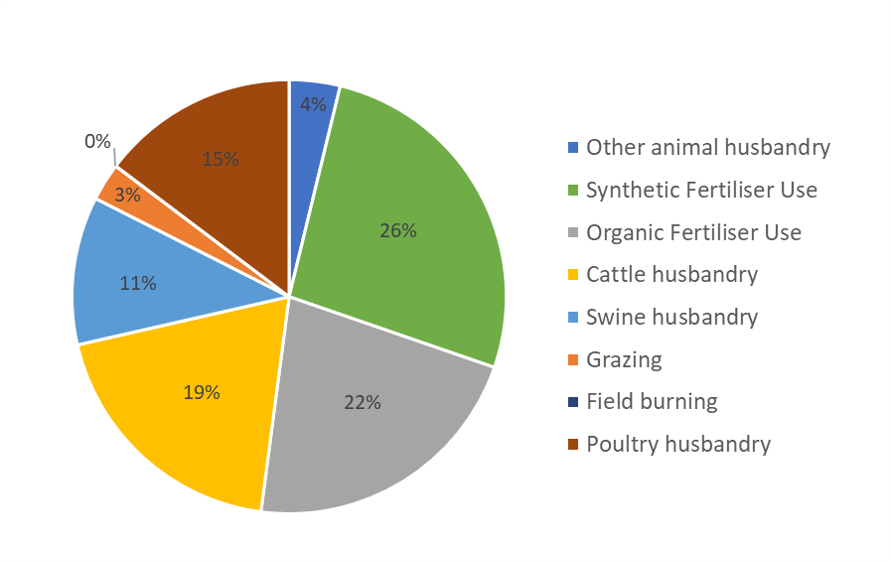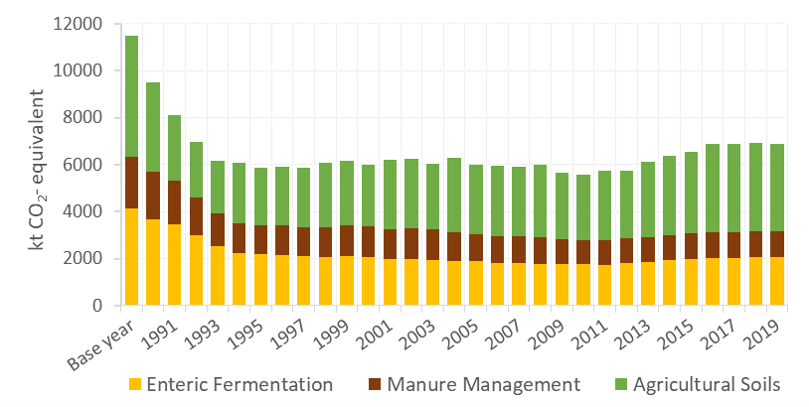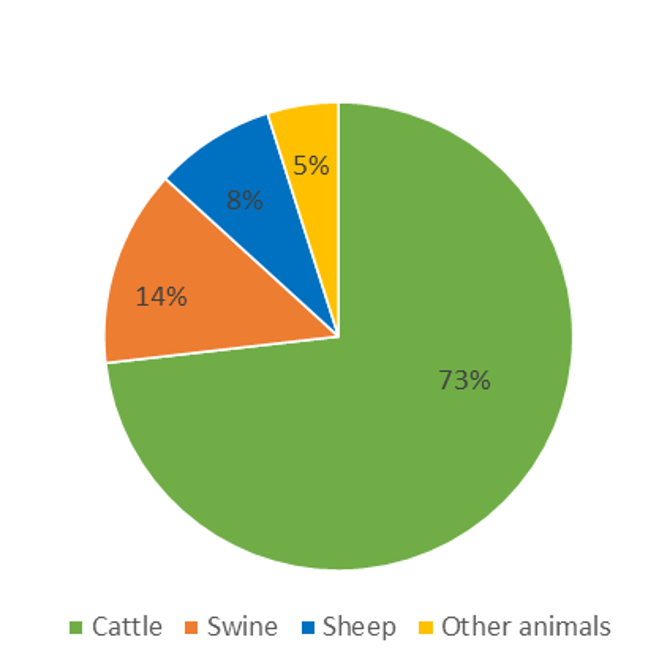Agriculture
The most important air pollutant of agricultural origin is ammonia, of which more than 90% comes from agriculture. Manure from intensive livestock farming, its storage and application in livestock buildings, and fertilisation (mainly urea fertilisers in solid and solution form) all contribute to ammonia formation.
Emission of ammonia from agriculture have decreased by 41% since 1990 and by 1% since 2005. The main reasons for this change were a reduction in number of pig and poultry and less use of organic manure due to smaller livestock. The biggest declines occurred in the aftermath of the regime change and the economic crisis in 2008.

Figure 1. Trends in main sources of ammonia emissions from agriculture between 1990 and 2019
Emissions reached theirs minimum in 2010 and has increased slightly since then and has stagnated in recent years. The increase in manure application methods that reduce emissions has also contributed slightly to the apparent halt in emissions growth. The main sources of NH3 emissions in Hungary are use of fertilisers and organic manure, and cattle husbandry.
Figure 2. Distribution of the main sources of agricultural NH3 emissions in 2019
In 2019, agriculture accounted for 11% of total emissions. Emissions from agriculture include CH4 and N2O gases. 86 percent of total N2O emissions were generated in agriculture in 2019. Emissions from agriculture have decreased by 41% over the period of 1985-2019. The bulk of this reduction occurred in the years between 1985 and 1995, when agricultural production fell by more than 30 percent, and livestock numbers underwent a drastic decline. The contribution of agriculture to total emissions was 11% in 2019 similar to the level in the base year (BY).
Between 1996 and 2008, agricultural emissions had stagnated around 6.2 Mt with fluctuations up to 5%. Behind this trend there were compensatory processes. While the number of livestock decreased further leading to lower emission, the use of fertilizers increased by 68% in the period 1995-2007 which caused growing nitrous oxide emissions from agricultural soils. In 2008 the significantly rising fertilizer prices led to lower fertilizer use, which resulted in some reduction in the emission levels.

Figure 1. Trends in emissions from Agriculture between 1990 and 2019
Agricultural emissions decreased both in 2009 and 2010. A major reduction in emissions occurred in 2009, when 11 percent decline in swine population also contributed to the downward trend. Agricultural emissions, after hitting the lowest point in 2010, had increased until 2018, mainly because of the increase in the inorganic fertilizer use, cattle livestock and milk production per cow.
The GHG emissions reflect the restructuring in the agricultural production has taken place since 2004, namely the increased ratio of crop to livestock production. Share of CH4 emissions, which derive mainly from the animal husbandry, has decreased, while the N2O emissions, originating primarily from the crop production has grown, since 2004.
Certain types of inorganic fertilizers as urea containing fertilizers and calcium ammonium nitrate (CAN) fertilizers contribute to the agricultural GHG-emissions not only with their nitrogen, but also their carbon content. In Hungary CAN fertilizers have become increasingly popular in the recent years, as a result N2O and CO2 emissions has tripled from this source since 2005.
Emissions growth stopped in 2019, mainly due to the decreasing swine livestock and synthetic fertilizer use.

Figure 2. Contribution of livestock species to GHG emissions from livestock production in 2019




